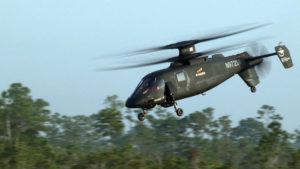
S-97 Raider. Lockheed Martin's Sikorsky unit announced last week it has flown its S-97 Raider helicopter at an Army installation for the first time, demonstrating the aircraft for service officials at Redstone Arsenal in Huntsville, Alabama. The S-97 Raider, which utilizes the company’s X2 co-axial rotor technology, is the basis for Sikorsky’s offering for the Army’s Future Attack Reconnaissance Aircraft (FARA) program, the Raider X. Sikorsky is competing for FARA with Bell, which is offering its 360 Invictus design. Jolly…













